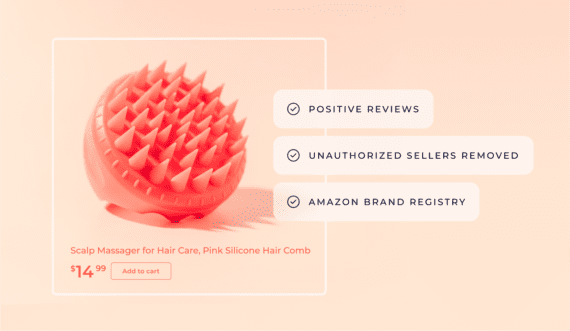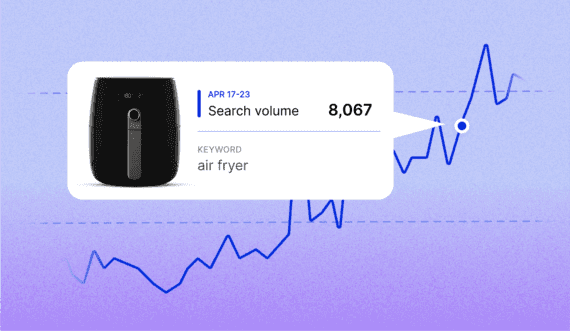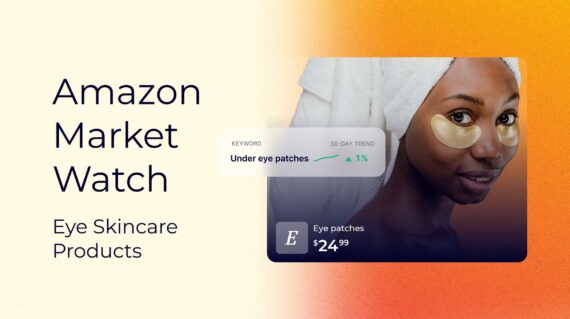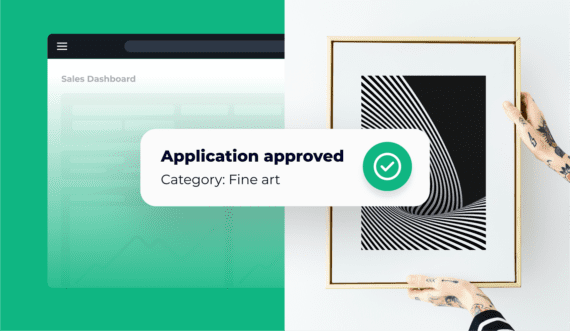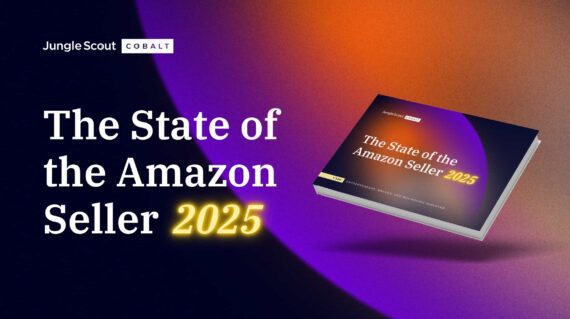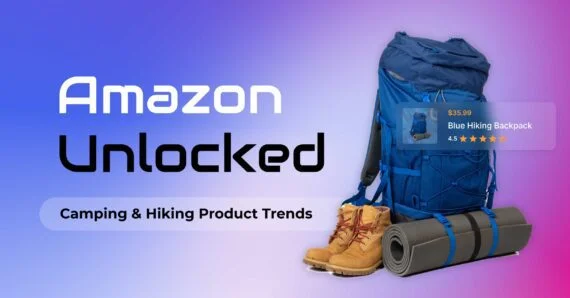Content
expand_moreAs more and more consumers choose online shopping over in-store shopping, advertisers need to take advantage of this audience of ready-to-buy customers. Nearly 3 in 4 consumers start their product search on Amazon.com — a compelling reason for sellers and brands to learn how to use the powerful advertising tools that Amazon provides.
And sellers are definitely taking advantage of these resources. In 2023, Amazon is expected to generate more than $39 billion in advertising revenue alone.
The cost of advertising on the platform is increasing, however, as brands become more and more competitive. In fact, 38 % of Amazon sellers are concerned about increasing ad costs on Amazon in 2023.
Read more:
Despite these concerns, it is still possible to run profitable PPC campaigns on Amazon — with the proper pricing strategy. To secure your profitability, it’s important to be informed about advertising best practices, what ad costs you’re up against, and how to figure out what your cost-per-click might be.
In this article, we’ll go over:
- Where Amazon advertisers spend the most
- How much it costs to advertise on Amazon
- How to estimate your own cost-per-click
Where are Amazon advertisers spending most of their ad budgets?
Whether you’re launching a brand new product or have a five-year-old listing with 1,000 reviews, Amazon advertising is essential to the success of many sellers.
Sponsored Products and Sponsored Brands
Professional sellers and brand-registered sellers can make use of the three PPC ad types on Amazon: Sponsored Products, Sponsored Brands, and Sponsored Display. If you are not enrolled in Brand Registry, only Sponsored Products is available to you.
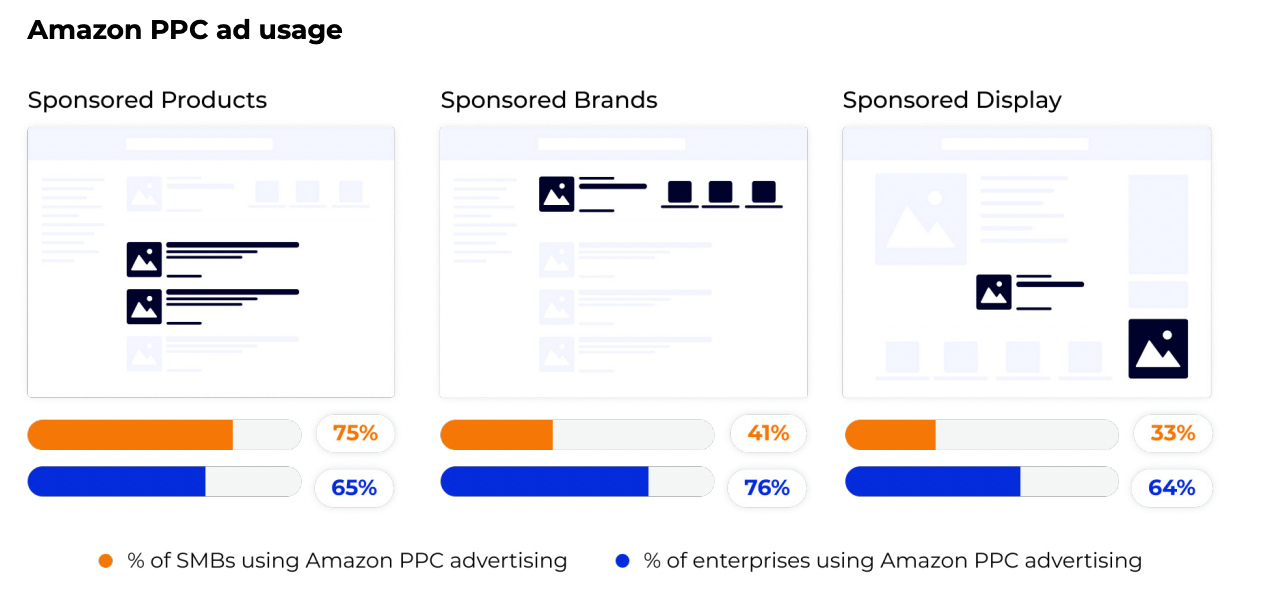
According to Jungle Scout’s ecommerce data, Sponsored Products is the most popular ad type amongst sellers and brands. But in the last three years, there has been a noticeable shift in ad spend from Sponsored Products ads towards Sponsored Brands and Sponsored Display ads — a clear indication that sellers find value in investing not just in their products, but also in their brand presence on Amazon.

Brands also focus their budgets on ad products that produce a good return on investment.
While the average RoAS for each Amazon PPC Ad Product dropped year-over-year, all three ad types are still profitable ways to promote your products on Amazon.
According to Jungle Scout’s ecommerce data, Sponsored Products yields the highest return on ad spend (RoAS) compared to Sponsored Brands and Sponsored Display.
Sponsored Products Ads are great option for sellers who are not brand registered. This ad type is very easy to set up and allows you to get in front of the right customers from day one of your launch. Even though this ad type is available to every professional seller, it still presents a big opportunity to uniquely advertise your products and convert visitors into customers.
The higher the RoAS, the more profitable your campaigns will be. Sponsored Display ads, in this case, may be better for visibility and brand awareness versus profitability — according to our data, they present a lower RoAS compared to the other two advertising solutions. Even though your return on ad spend may not be as great with Sponsored Display, these ads allow you to reach relevant audiences on and off Amazon.
Loose match type
In Sponsored Products, you have the option to run a manual campaign or an automatic campaign. You choose the keywords you want to target in a manual campaign. In an automatic campaign, Amazon will choose keywords for you based on your listing’s title, bullet points, description, and back-end keywords.
Within automatic targeting, there are four different match types you can turn on: Close match, Loose match, Substitutes, and Complements. The targeting type you choose for your ads helps determine your RoAS.
Out of all the match types, close and loose match are among the top 3 ad targeting types for actual RoAS.
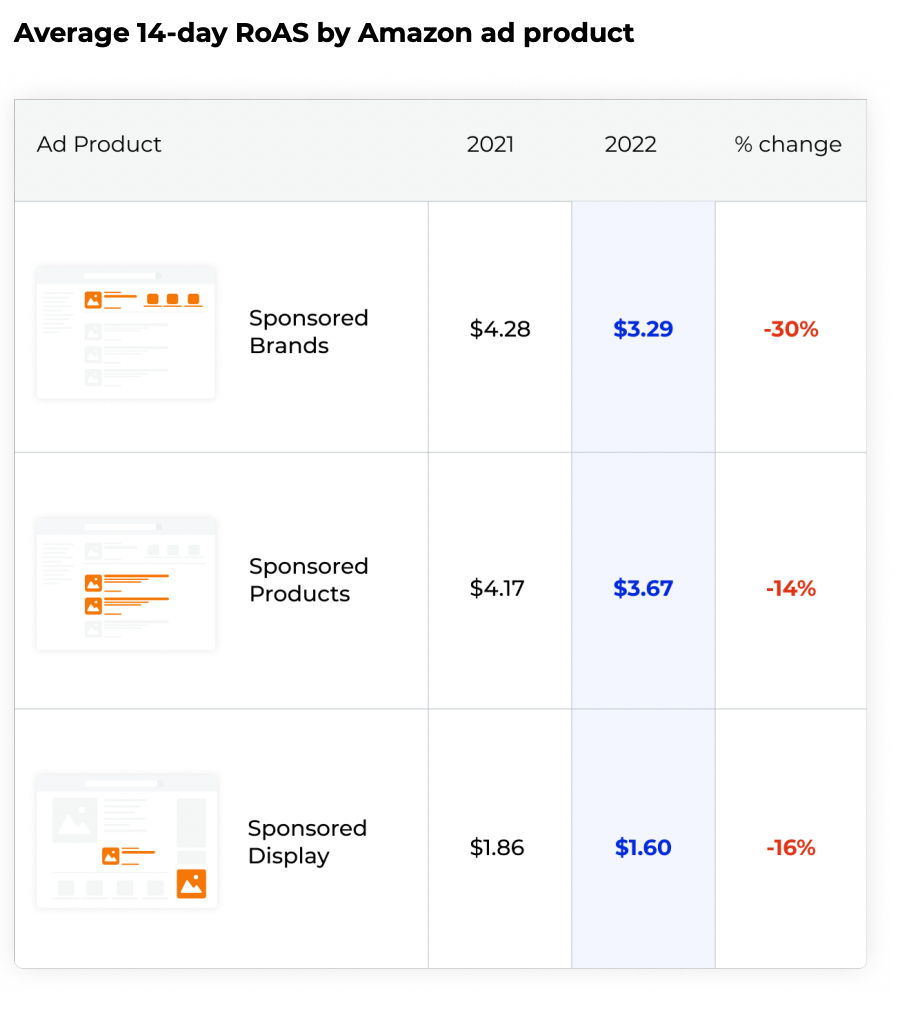
While loose match has the lowest CPC, close match ads result in the greatest RoAS over a 14- and 30- day period. This is because the more relevant the ad is to a customer, and the more intent the customer has to buy that product, the more likely they are to make a purchase.
Broader match types like ASIN, Substitutes, Category, Views, and Complements may result in irrelevant impressions and clicks, resulting in a lower RoAS and a higher cost. This is because the broader your ads are, the less relevant they become to each shopper searching for your products.
Amazon advertising costs explained
The cost of advertising on Amazon depends on a few different factors: the ad types you choose, your daily budget, your ad targeting type, and your bids per keyword. You get to decide how much you want to spend on a daily basis but there’s more to it than that.
Spending just $10 a day on your campaign can work, but if the campaign is not profitable, you’re going to end up spending more money than you make back. You need to target relevant keywords in your campaigns but your ad conversions also depend on other important factors such as the type of product you’ve chosen to sell, your product price, your listing’s images, and the kinds of reviews you’ve gained.
If you send traffic to a poorly optimized listing, the customer is less likely to purchase from you, compared to your competitors.
There is no one size that fits all when it comes to ad costs on Amazon. It’s going to be different for every product, every niche, and every seller. It takes time to learn, but once you have properly optimized your listings and campaigns, you’ll notice higher conversions and RoAS.
What should my daily advertising budget be?
We recommend starting with $50 to $100 a day for your PPC campaigns, but you can easily start with just $5 to $10 a day and make adjustments over time. Gather data while you let your campaigns run for a few weeks, so you can make informed decisions on which keywords to target and what keyword bids to make — and further improve your listings. Watch your budget: if it runs out early, your campaigns will be paused. If you find your budget running low, simply increase your daily budget if you’re profitable, or remove/change costly keywords that are not converting into sales.
Ultimately, it doesn’t really matter what your daily budget is, as long as it is profitable, and brings you a positive return on your investment.
Example: Your ads run for 7 days with a daily budget of $10 a day. At the end of the 7 days, you will have spent $70 on ads. If those ads yielded only $100 in sales after Amazon fees and your cost of goods, your campaign isn’t profitable. You will need to take a look at the keywords you are targeting and figure out why they’re not converting into sales.
But, if those ads brought $500 in sales, then you have done something right. This is an opportunity to think about increasing your daily budget so your effective ads run longer, resulting in a boost in sales.
How do keyword bids work?
A keyword bid is the amount you are willing to pay when someone clicks on your ad. When you place a bid, you are bidding against your product competitors for ad placement. If you set your keyword bid at $0.50, that is the maximum amount you will pay each time someone clicks on your ad. If your competitor has a higher bid for that particular keyword, then they will have better ad placement. This does not mean your ad will not appear before consumers, but your competitor’s ad will be in a spot ahead of yours.
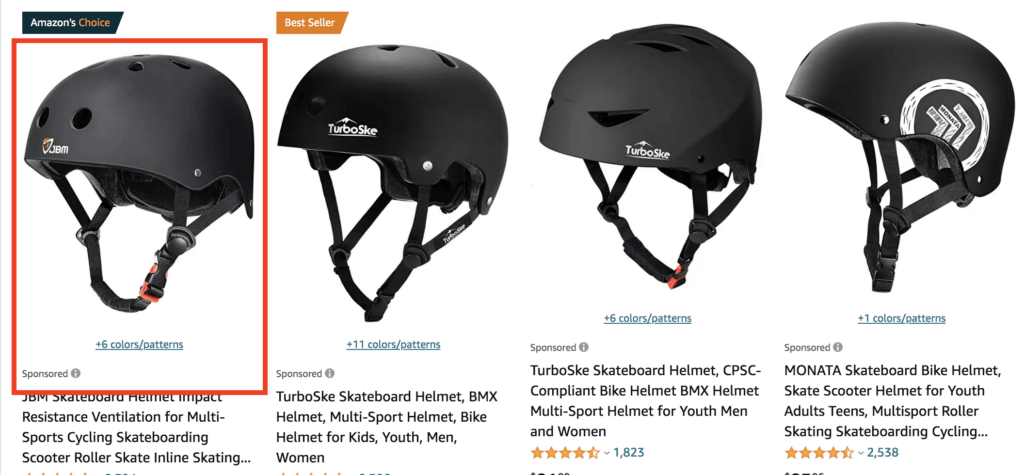
Let’s say you are the second sponsored ad above (second from left) and you are bidding $0.50 per click. In this example, the competitor ahead of you (in the red box) could be bidding $0.55, which might explain why they’re in the first position —a position that buyers will easily see first.
Amazon will also offer you recommended bid amounts for each keyword. Going with Amazon’s recommendations will typically land you one of the higher ad placements in the search results. Use these recommendations from Amazon as a guide, but you can change your bids at any time. Bid higher or lower amounts, make adjustments, and see how your entries perform.
Setting your maximum bid to $0.50 doesn’t mean that you will always pay $0.50 per click. Your CPC may be lower, depending on what the next highest bidder has chosen. If your closest competitor is only bidding $0.30 per click, you will only pay $0.31 per click.
You can bid lower than the recommended amount but bidding low in an effort to save some money has its disadvantages. For example, if you are bidding lower than your competitors, your ads may not appear in prime locations within the search results. The lower you bid, the smaller the chance of your ad appearing. If you bid at the recommended amount or higher, your ad has a better chance of appearing at the very top of the search results.
If you are bidding much lower than other sellers in your niche, your ads may not even show up at all. This is why it is very important to test and understand what it may cost per click, per keyword.
How to estimate your cost-per-click
As mentioned above, Amazon will show you the recommended bid amount for each keyword that you are targeting in your campaign. But what if you don’t have a listing up yet?
It is important to understand what it will cost per click for the main keywords in your niche before you invest in a product. If the average CPC per keyword is very high, that may tell you that the niche is very competitive and it will be harder to gain impressions on your ads and listing.
You can expect to pay anywhere from $0.05 to $10 per click for PPC campaigns. That is a very wide range, but the amount you end up paying depends on how competitive your niche is. It is hard to confidently give an average CPC because it will truly vary, depending on the product and market.
For example, a competitive product such as a “travel k cup machine” has an estimated exact bid cost of $7.50 per click and $4.57 per click for broad match.

Compare this to a less competitive product such as a “steering assist knob,” which has an estimated cost of $0.35 for exact match and $0.25 for broad match.

If you don’t have the option to create an ad in Seller Central, then how can you estimate your CPC? Jungle Scout’s Keyword Scout tool will show you the estimated median cost of a broad and exact match PPC ad as well as the cost of a Sponsored Brand ad.
Type in a broad keyword for your product into Keyword Scout, and you will be shown hundreds, or even thousands of relevant keywords — all with an estimated CPC.
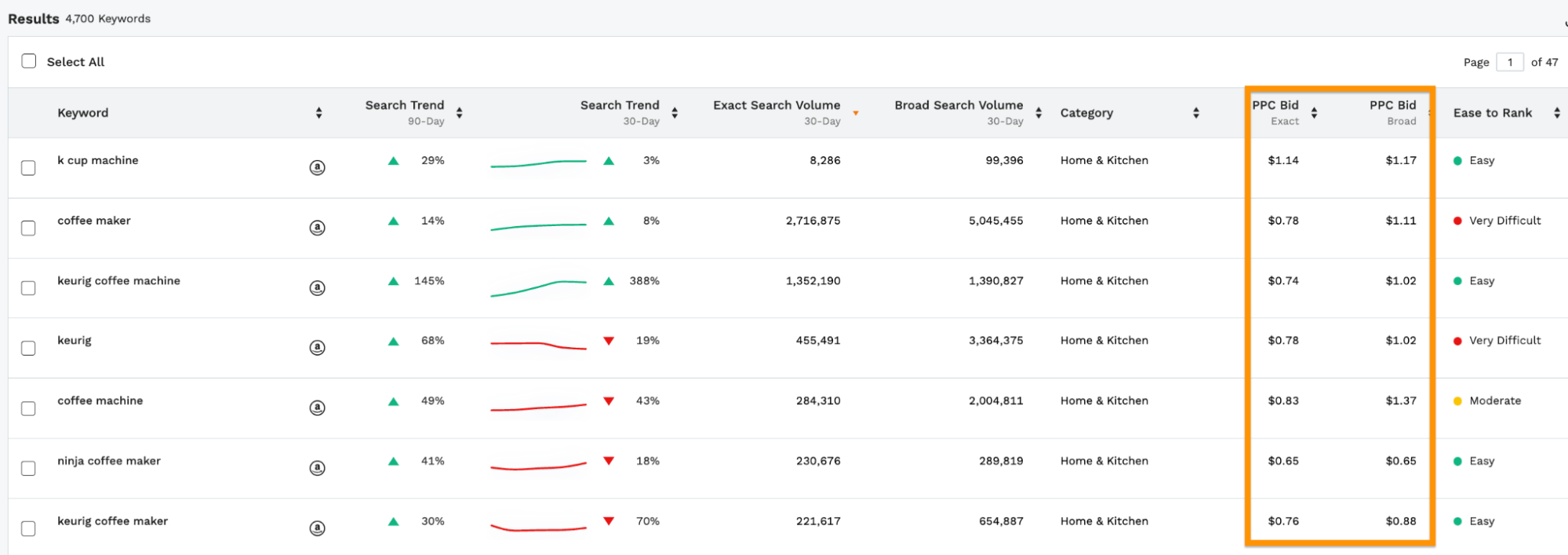
Check out how close our estimates are to Amazon’s recommended bid in this screenshot from a test advertising campaign. It shows you the bid range for the broad keyword “k cup machine” and what Amazon suggests your bid should be.

“Suggested bids are calculated daily based on past bidding activity for ads similar to yours to predict bids that are more likely to win.”
Now you have a good idea of what it will cost you to target each of these keywords in your advertising campaigns on Amazon. Another important aspect of targeting keywords is figuring out what your target Advertising cost of sale (ACoS) will be.
Your ACoS is essential for measuring and evaluating the success of your PPC advertising campaigns. Knowing your target ACoS will also allow you to make necessary adjustments for optimizing them.
Before investing in a product, make sure you factor in your potential advertising costs as well — not just the product costs and Amazon fees.
Do you need a more in-depth guide on how to set up your PPC campaigns? Check out chapter 6 of our How to Sell on Amazon for Beginners guide.
Understand your Amazon advertising pricing
If you invest the time to study and learn how to determine your advertising costs, you’ll be well ahead of your competition who neglected to do the same. It is very important to understand as an Amazon seller — especially as a new seller. Without knowing what your potential ads may cost, you could be spending your entire profit margin — and more — on advertising. Just by reading this article, you are already ahead of the curve!
What are the benefits of well-planned Amazon ads? They include increased sales, more visibility, lower ad costs — and profits in your pocket.
We hope this guide gives you a better understanding of your Amazon ad costs. If you need more information on advertising on Amazon, here are a few more resources you can check out!
Do you have more questions about the costs of your Amazon ads? Let us know in the comments!
Use Jungle Scout to Estimate Your Ad Costs
How much do Amazon ads cost? Use Keyword Scout and more to estimate yours!
Brian Connolly is an Amazon seller, ecommerce expert, and writer for Jungle Scout. He lives in the New Jersey Shore area with his wife and cat. When he isn’t writing advice online for aspiring and experienced Amazon sellers for Jungle Scout, he spends his free time boating, fishing, and selling boating-themed items on his Amazon business.



